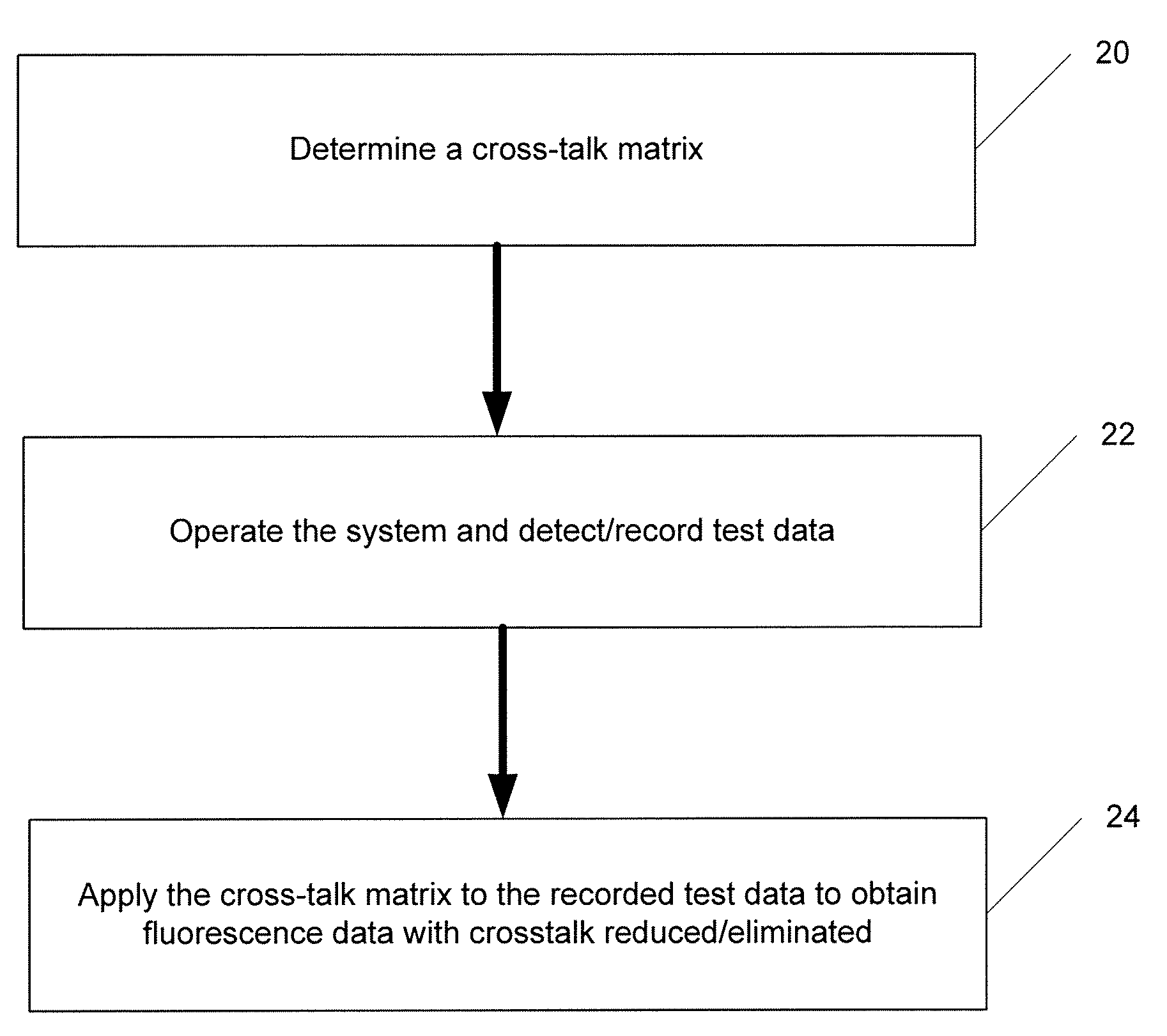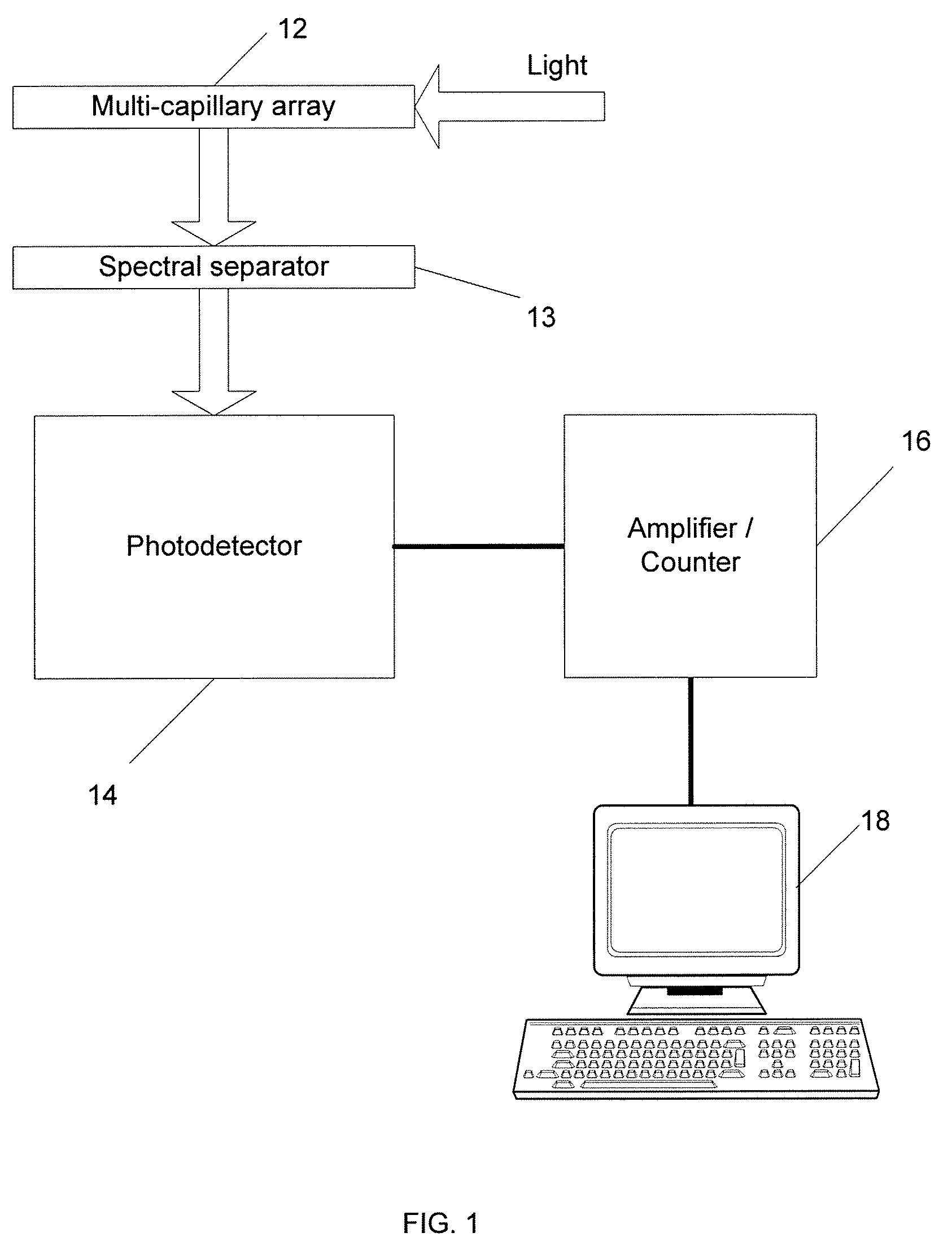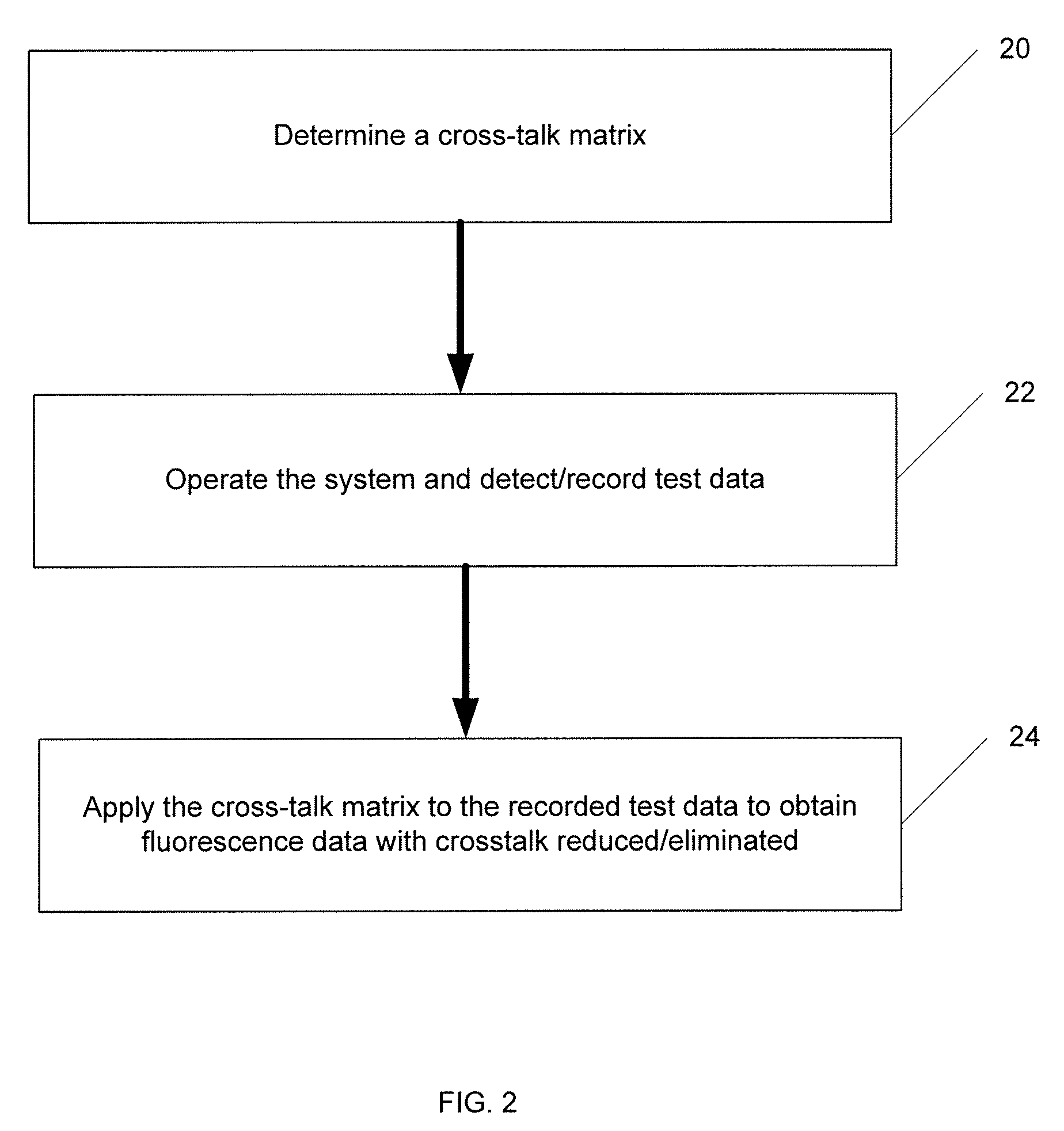System and method for cross-talk cancellation in a multilane fluorescence detector
a multi-lane fluorescence detector and cross-talk technology, which is applied in the field of photodetection systems and methods, can solve the problems of cross-talk, prior art systems have not addressed this issue, and the elimination of lane cross-talk, etc., and achieve the effect of improving light collection efficiency, reducing cross-talk, and increasing collection angl
- Summary
- Abstract
- Description
- Claims
- Application Information
AI Technical Summary
Benefits of technology
Problems solved by technology
Method used
Image
Examples
Embodiment Construction
[0018]Referring now to FIG. 1, an exemplary embodiment of a multi-lane DNA sequencing system according to the present invention is shown. In this exemplary embodiment, the system of FIG. 1 may be similar to the system described in Alaverdian et al. in with the exception of the novel lane cross-talk removal function implemented in accordance with the present invention.
[0019]The exemplary embodiment of FIG. 1 may include a multi-capillary array 12. In a preferred embodiment the array may be a 16- or 48-capillary array, such as those made available by Applied Biosystems, Inc., or may be any other multi-capillary array. The multi-capillary array 12 may preferably be inserted into a precision holder.
[0020]In accordance with the exemplary embodiment of FIG. 1, a laser beam illuminates the array from the side and excites fluorescence in the capillaries of the array 12. In an exemplary embodiment, the laser beam may be generated by a fiberized, single mode 25 mW NdYAG laser (532 mm), such a...
PUM
| Property | Measurement | Unit |
|---|---|---|
| size | aaaaa | aaaaa |
| peak voltage | aaaaa | aaaaa |
| peak voltage | aaaaa | aaaaa |
Abstract
Description
Claims
Application Information
 Login to View More
Login to View More - R&D
- Intellectual Property
- Life Sciences
- Materials
- Tech Scout
- Unparalleled Data Quality
- Higher Quality Content
- 60% Fewer Hallucinations
Browse by: Latest US Patents, China's latest patents, Technical Efficacy Thesaurus, Application Domain, Technology Topic, Popular Technical Reports.
© 2025 PatSnap. All rights reserved.Legal|Privacy policy|Modern Slavery Act Transparency Statement|Sitemap|About US| Contact US: help@patsnap.com



